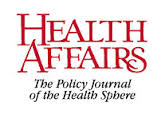Underinsurance Remains a Problem
Twenty-three percent of American adults are uninsured, according to a new survey by the Commonwealth Fund.
Among them, 14 million had deductibles that exceeded five percent of their income while another 24 million had deductibles that fell below that threshold but had out-of-pocket health care costs – deductibles, co-insurance, co-payments, and out-of-network payments – that exceeded ten percent of their income.
The figures are for 2012 and reflected no change since 2010 but were nearly twice those found in 2003.
 In addition, the survey found that the proportion of the insured with high-deductible plans has more than tripled, from three percent to 11 percent, since 2003. This is believed to reflect the proliferation of high-deductible plans in recent years – a proliferation that has increased with implementation of the Affordable Care Act and the many high-deductible plans offered through the federal exchange and state exchanges. This survey, however, did not distinguish between pre- and post-Affordable Care Act insurance policies.
In addition, the survey found that the proportion of the insured with high-deductible plans has more than tripled, from three percent to 11 percent, since 2003. This is believed to reflect the proliferation of high-deductible plans in recent years – a proliferation that has increased with implementation of the Affordable Care Act and the many high-deductible plans offered through the federal exchange and state exchanges. This survey, however, did not distinguish between pre- and post-Affordable Care Act insurance policies.
Another category of the uninsured is those with income less than 200 percent of the federal poverty level whose out-of-pocket health care costs are greater than five percent of their income. Such individuals can pose a special challenge to safety-net hospitals because they often are unable to pay their co-pays, deductibles, and some of their medical costs.
For a closer look at the numbers, who is underinsured, the role of high-deductible plans in being underinsured, the effect of being underinsured on gaining access to care and addressing health problems, and more, see The Problem of Underinsurance and How Rising Deductibles Will Make it Worse, an issue brief summarizing the Commonwealth Fund survey.







